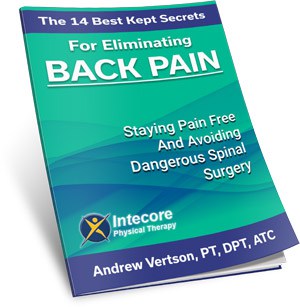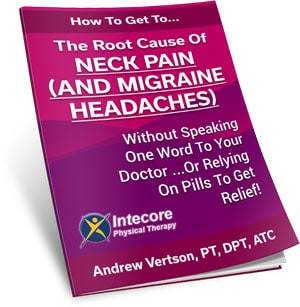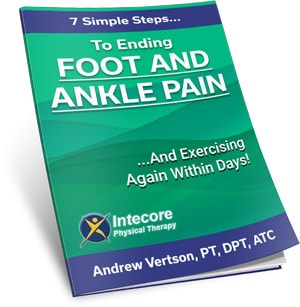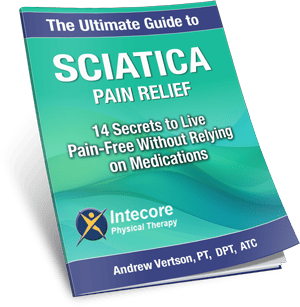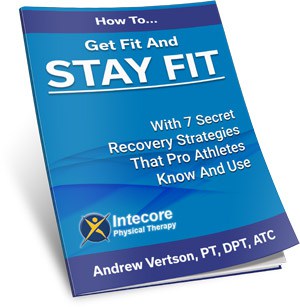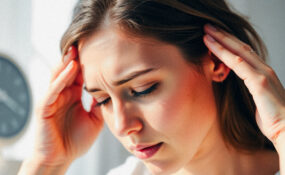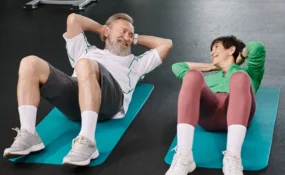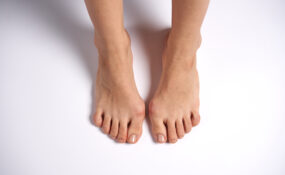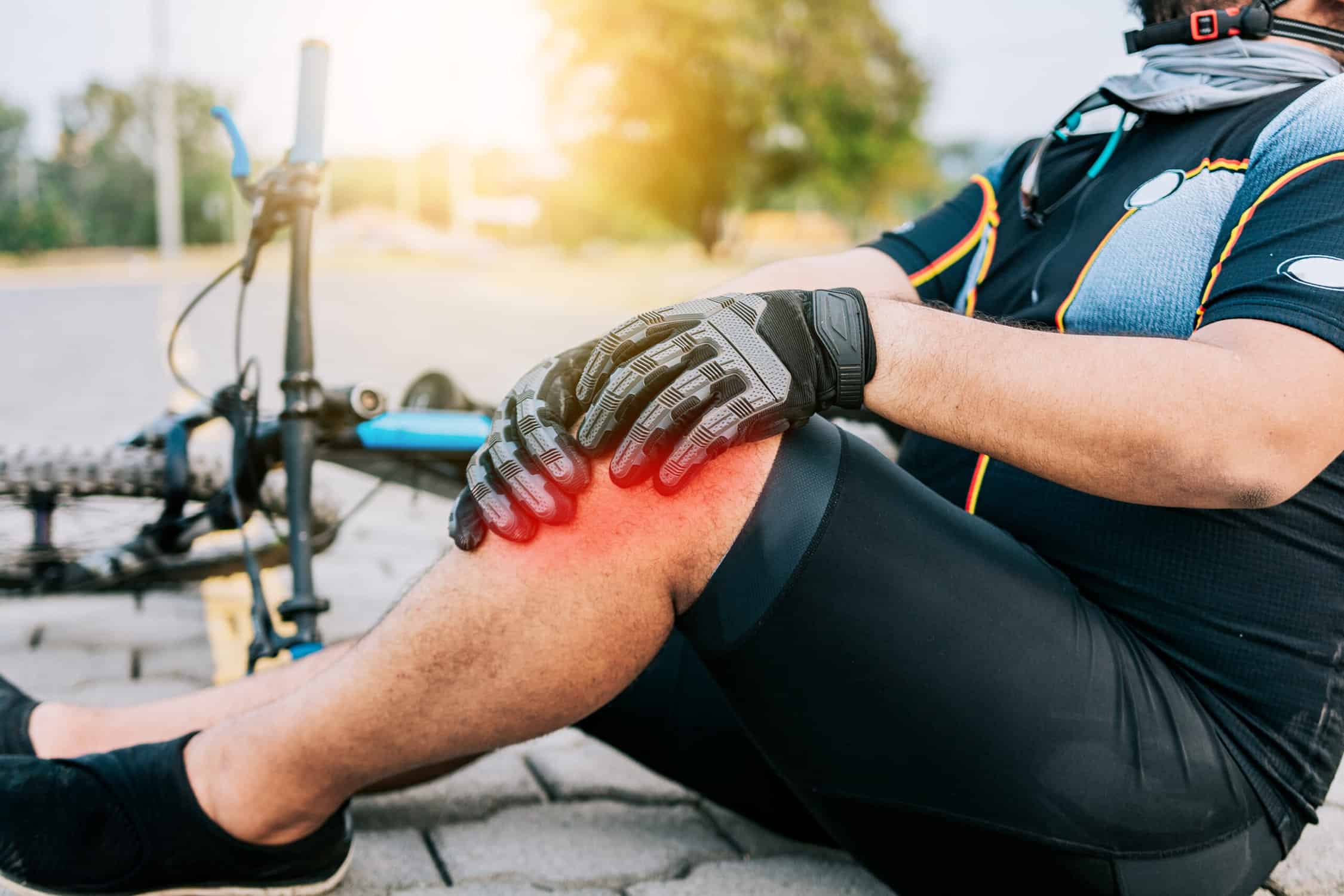
Knee pain after biking. If you’re a cyclist, those words might stir up a familiar ache, a twinge that signals the end of an exhilarating ride. You’re not alone in this struggle. Picture this: you’ve just completed a scenic trail, the wind rushing past, the sun on your skin. But as you dismount your bike, a sharp discomfort shoots through your knees, dampening the thrill of your adventure. It’s a frustrating reality for many, but there are ways to ease knee pain after biking and even prevent it!
In this article, we’ll explore three common culprits that can cause knee pain after biking. But fret not, fellow riders, we’ll also unveil strategies to ease this discomfort and keep you peddling towards your next ride. So, saddle up and let’s take a look at how to prevent knee pain after biking!
More Posts Like This By Intecore PT:
Sprained Ankle vs Broken Ankle: How to Tell the Difference and Get Back on Your Feet
How Long Does a Meniscus Tear Take to Heal?
Why Can’t I Bend My Knee Without Knee Pain?
Table of Contents
Symptoms of Knee Pain After Biking
Knee pain after biking can manifest in various ways, indicating different underlying issues. Recognizing these symptoms is important for identifying the root cause of the discomfort and taking appropriate measures to address it.
- Localized Pain: One of the most common symptoms is localized pain around the knee joint. This pain can vary in intensity from mild discomfort to sharp, stabbing sensations. It may occur on the front, back, or sides of the knee, depending on the area that’s affected.
- Swelling: Swelling around the knee joint is another prevalent symptom of knee pain after biking. The accumulation of fluid can result from inflammation caused by overuse, injury, or underlying conditions such as tendonitis or bursitis. Swelling may be visible and accompanied by warmth or tenderness to the touch.
- Stiffness: Post-biking knee stiffness is often experienced, especially after prolonged periods of inactivity following a ride. Stiffness can make it challenging to bend or straighten the knee fully and may be accompanied by a sensation of tightness or restriction in movement.
- Clicking or Popping Sensations: Some individuals may experience clicking, popping, or grinding sensations within the knee joint during or after biking. These noises may be indicative of underlying issues such as cartilage damage or patellar malalignment and should be evaluated by a healthcare professional.
- Instability or Weakness: Knee instability or a feeling of weakness in the joint can occur after biking, particularly if there is underlying ligament or muscle damage. Instability may cause the knee to give way or buckle unexpectedly, compromising balance and increasing the risk of falls.
- Difficulty Weight Bearing: Severe knee pain after biking may make it difficult to bear weight on the affected leg. Individuals may experience discomfort when standing, walking, or climbing stairs, limiting their mobility and impacting daily activities.
- Redness or Warmth: Inflammatory conditions affecting the knee joint may cause redness and warmth in the surrounding area. These symptoms, accompanied by pain and swelling, may indicate conditions such as arthritis or synovitis and warrant prompt medical evaluation.
3 Things That Cause Knee Pain After Biking
Improper Bike Fit
Improper bike fit is a common culprit behind knee pain for cyclists. When your bike isn’t properly adjusted to your body, it can lead to misalignment of the knees, causing stress and strain during cycling, which can exacerbate knee pain over time.
Saddle height plays a crucial role; if it’s incorrect, it can lead to either too much or too little knee flexion during peddling, causing discomfort. Similarly, saddle fore/aft position is vital. A saddle positioned too far forward or backward can disrupt proper knee alignment, resulting in pain in the front or back of the knee. Pedal position is another factor to consider. If the pedals are not adjusted to accommodate the natural angle of the foot, it can contribute to knee pain.
To address these issues and ensure optimal knee alignment, several strategies can be employed. First and foremost, consulting with a professional bike fitter is highly recommended. A bike fitter can assess your riding style, body mechanics, and any existing issues to tailor the bike fit to your specific needs. Adjusting saddle height is crucial, aiming for a slight bend in the knee at the bottom of the pedal stroke to stop overextension or excessive flexion.
Fine-tuning saddle fore/aft position is also important, aiming to center the knee over the pedal spindle to promote balanced pressure distribution and optimal power transfer. Additionally, optimizing pedal position to accommodate the natural angle of your foot can reduce strain on the knees and improve peddling efficiency.
Overuse and Training Errors
Overtraining can be a significant contributor to knee pain after biking. It often correlates with increased stress on the knee joints due to excessive strain and repetitive motion. Common training errors, such as sudden increases in mileage or intensity, not enough rest periods, and improper technique, can lead to overuse injuries.
To mitigate these risks, prioritize rest and recovery days, gradually increasing mileage and intensity, cross-training to stop muscle imbalances, and focusing on proper biking technique. By incorporating these tips into your training regimen, you can prevent cycling knee pain.
Inadequate Warm-up and Cool-down
Without a proper warm-up, the muscles remain tight and stiff, increasing the risk of strain and injury during a bike ride. This can put excessive stress on the knees, especially if they are not sufficiently warmed up to support the repetitive motions of peddling.
Similarly, skipping the cool-down phase denies the muscles the opportunity to gradually return to their resting state, leading to increased muscle tension and potential post-exercise soreness. Over time, this lack of proper warm-up and cool-down can exacerbate muscle imbalances, reduce flexibility, and compromise joint stability. Additionally, inadequate warm-up and cool-down routines may hinder blood flow to the muscles, impairing nutrient delivery and waste removal, which are essential for muscle recovery and repair. As a result, the knees may experience prolonged discomfort and delayed recovery, making them more susceptible to pain and injury.
In conclusion, addressing knee pain after cycling requires a multifaceted approach. We’ve explored the three key factors that can exacerbate discomfort: improper bike fit, overuse and training errors, and inadequate warm-up and cool-down routines. By implementing actionable steps to rectify these issues, cyclists can alleviate knee discomfort, fix knee pain, and enhance their overall riding experience.
However, in cases where knee pain persists despite these efforts, seeking professional help may be necessary. Physical therapy offers targeted interventions to address underlying biomechanical issues, strengthen supportive muscles, and improve joint stability. By working with a physical therapist, cyclists can receive personalized treatment plans tailored to their specific needs, ultimately allowing them to return to pain-free biking and enjoy the freedom of the open road once again.
Ready To Get Help For Knee Pain With Physical Therapy?
Feeling overwhelmed or unsure about managing your knee pain while cycling? Don’t fret; we’re here to support you every pedal of the way. Reach out to our clinic today to schedule a free 15 minute consultation, and let’s work together to get you back in the saddle pain-free: 949-597-2103
If you’re not read to speak with us right now, you can download our FREE knee pain tips guide here:
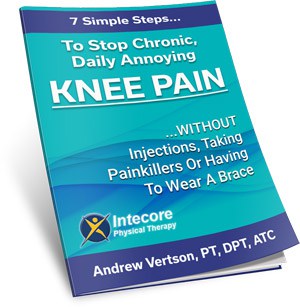
- 7 Ways to Get Rid of Tension Headaches Naturally - July 1, 2025
- Why Are My Feet Swollen? Common Causes Explained - June 2, 2025
- What Is Restless Leg Syndrome? Symptoms, Causes, and Relief Options - May 5, 2025





